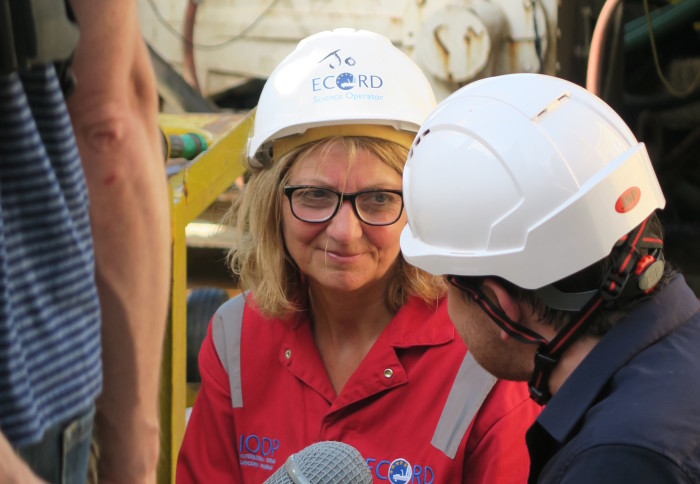Prof Joanna Morgan wins Barringer Medal for outstanding work in impact cratering

Professor Joanna Morgan is the first UK recipient and second woman to receive this recognition since the prize began in 1984.
Morgan’s research with the European Consortium for Ocean Research Drilling (ECORD) in 2016 looked at the Chicxulub impact crater on Mexico’s Yucatan peninsula, studying core to understand the asteroid impact that killed the dinosaurs 66 million years ago.

Recovering drill core at the impact site and analysing that rock allowed Morgan and colleagues to model what happened immediately after that impact. One of their discoveries was that life recovered much faster than expected at the impact site.
The Barringer Medal and Award was established in 1982 to recognise outstanding work in impact cratering and/or work that has led to a better understanding of impact phenomena. D. Moreau Barringer Sr., in whose name the prize is given, was the first to seriously propose an impact origin for the crater that now bears his name.
One of the lovely results from this work was a beautiful image of Chicxulub’s peak ring, which offered clues to how peak rings were formed. Professor Jo Morgan Seismologist, Department of Earth Science and Engineering
“I’ll start by saying how honoured I am to be awarded the Barringer medal”, says Professor Joanna Morgan. “I am a seismologist – I use seismic data to image and map structures below the Earth’s surface, so one of the first things I was involved in was acquiring seismic data across the Chicxulub crater to try and determine its size and morphology. One of the lovely results from this work was a beautiful image of Chicxulub’s peak ring, which offered clues to how peak rings were formed. Our formational model was tested when we drilled into the peak ring in 2016.”
Professor Richard Grieve, an adjunct professor at the University of Western Ontario, and recipient of the Award in 1990, says of Morgan’s work: “The research results of the drilling at Chicxulub were runner-up in the 2019 “science breakthrough of the year”, losing out to, of all things, an image of the black hole. Jo’s research and primary role in their success is a legacy to be envied and unlikely to be duplicated. They are more than fitting that of a recipient of the Barringer Award from the Society. I am proud to consider Professor Jo Morgan a much-valued colleague and welcome her much deserved addition to the cadre of Barringer Award recipients.”
Prof Jo Morgan is richly deserving of this award as it recognises her seminal contributions to our understanding of the formation of the Chixulub crater Professor Ann Muggeridge
Professor Ann Muggeridge, Chair in Petroleum Engineering, says of Morgan’s receipt of the award: “Congratulations to Jo Morgan. She is richly deserving of this award as it recognises her seminal contributions to our understanding of the formation of the Chixulub crater, its impact on the dinosaurs and life on Earth after their extinction. Everyone in the Department of Earth Science and Engineering is very proud of her."
Professor Mark Sephton, Head of Department, adds: “This medal is an exceptional award that recognises an outstanding scientist. Professor Morgan’s work on the “Crater of Doom” is both exciting and inspiring. The evidence she has uncovered provides an insight into one of the most cataclysmic events in Earth history. As a Barringer Medal winner she is a role model for all that follow her.”

You can listen to a recent podcast about Professor Jo Morgan's research, in an episode of Science Rules! with Bill Nye.
Article text (excluding photos or graphics) © Imperial College London.
Photos and graphics subject to third party copyright used with permission or © Imperial College London.
Reporter
Victoria Murphy
Institute of Global Health Innovation